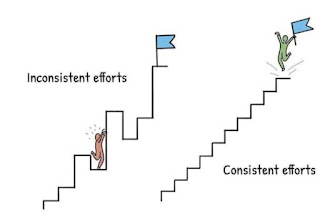Vani had a secret that no one knew about—she was often overwhelmed by worries and fears that made her feel like she was carrying a giant, invisible weight. Every day, she felt like she was walking through a foggy forest where every step felt uncertain. This was her anxiety, and it had taken hold of her without her even realizing how.
The Big Worry Trap:
Vani’s Storm of Thoughts
Vani’s mind was like a room filled with loud, chaotic noises. These weren’t happy sounds—they were worries, doubts, and fears that constantly echoed in her head.
Karen Horney, a German-American psychoanalyst who studied how minds work, said that this feeling was called basic anxiety. It was like a storm inside her, one that wouldn’t go away, and it made Vani feel small and trapped.
Instead of facing the storm, Vani tried to pretend everything was perfect. She put on what she thought was a superhero mask—acting like she had no worries and could do everything flawlessly. But the more she wore that mask, the more tired she became, and the lonelier she felt. It was like carrying a heavy backpack, full of fear and confusion, everywhere she went.
The Cool Fix: Becoming the Real You
One day, Vani heard about Karen Horney’s magical ideas to overcome the storm of anxiety. The secret, Horney said, was to stop pretending and find your real self. Vani was intrigued—could this be the way out of her storm?
Horney believed that we all have a true, wonderful self hidden under layers of worries and fears. To be truly happy, Vani needed to face her anxiety, take off her superhero mask, and let her true self shine.
How Vani Reclaimed Her Real Self ??
STEPS :
1. Take Off the Superhero Mask
Vani realized she didn’t need to act like a perfect superhero anymore. Trying to be flawless & PERFECT was exhausting and made her feel even more alone. By admitting it was okay to make mistakes, Vani started to feel lighter.
No more mask—just Vani, as she was, with all her flaws and all her positives
2. Look Inside
Vani thought about her worries and fears
—what made her feel anxious?
Maybe it was moments when she felt unimportant or
when things didn’t go as planned.
Understanding where her anxiety came from helped her see that these feelings weren’t as big and scary as they seemed. Once she understood them, she could change the way she thought about them, slowly learning to love and accept herself.
3. Make Real Friends
Karen Horney had another important lesson:
To heal, you need real friends / real people — those who listen and understand you. Vani reached out to her closest friends and shared her struggles. She realized she wasn’t alone, and having friends who cared made her feel stronger, like the storm inside wasn’t so scary anymore.
4. Learn New Ways to Handle Stress
Instead of running away from her worries, Vani started learning how to face them calmly. She practiced taking deep breaths when things got overwhelming and found comfort in talking to her friends. Slowly, she learned how to face the storm with a calm heart, like a knight with a shield.
How Vani Changed: Unlocking Her True Power
As Vani kept practicing these new ideas, she started feeling stronger and braver. Every time she faced her worries, they grew a little smaller. And with each step she took, she uncovered more of her true self—someone wise, caring, and full of power.
Vani learned that anxiety wasn’t a part of who she was. She had just learned to feel it, but she didn’t have to carry it forever. She could let it go, one step at a time, and be free.
Breaking Free from Worries
One sunny afternoon, Vani stood outside, feeling the breeze on her face. The storm inside her had calmed, and in its place was a peaceful quiet. She knew she wasn’t perfect, and that was okay. By facing her fears and being real, she had found her true strength.Karen Horney’s ideas had shown her the way to overcome her worries.
Anxiety wasn’t her enemy
— Now it was something she could learn to understand and control.
Vani realized she didn’t need to pretend to be someone else. She was already amazing just as she was.
And so, Vani walked forward with her true self shining brightly, ready to face anything that came her way, knowing that the real her was more than enough.






.jpg)










